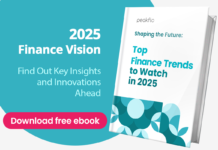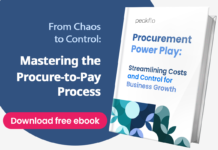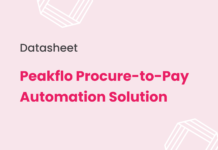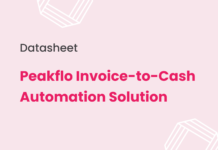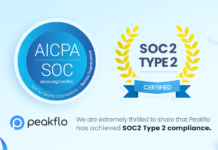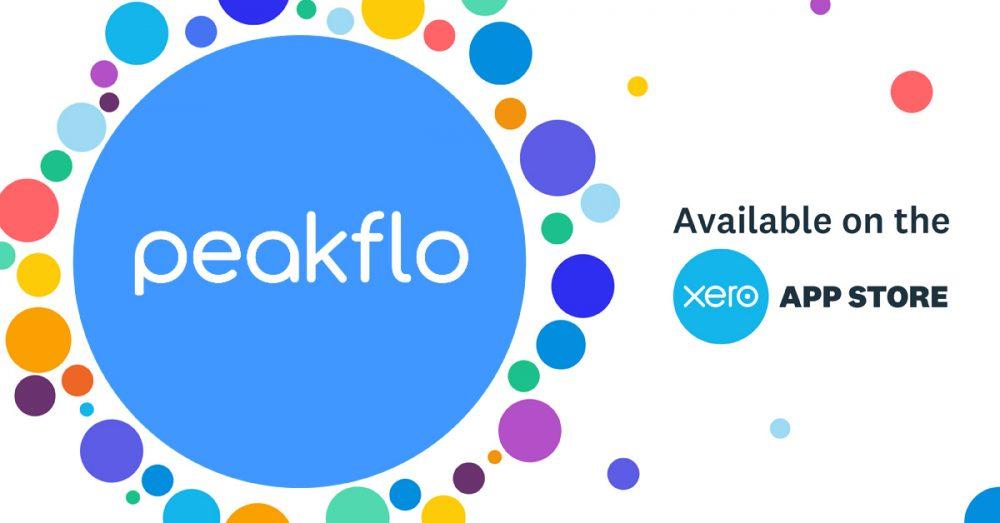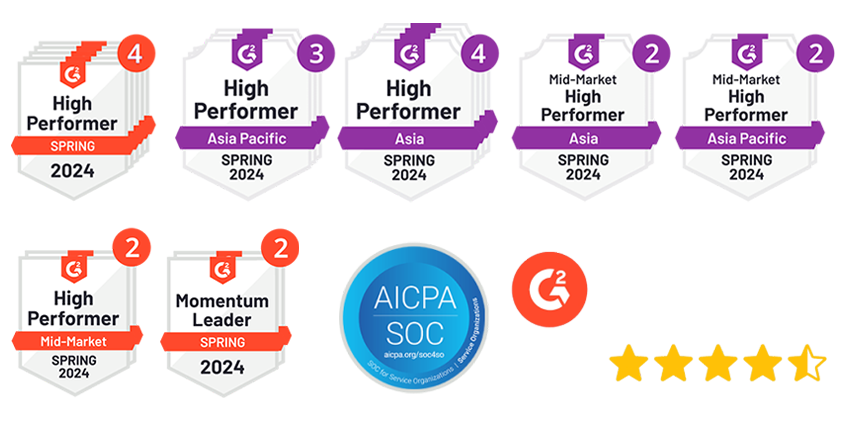Agentic AI vs AI agents can be a headache for business leaders trying to make sense of these technologies. This confusion persists even as 82% of companies plan to adopt AI agents in the next three years. These terms get thrown around interchangeably, but they represent fundamentally different approaches to artificial intelligence. About 65% of companies already use generative AI and AI agents, yet many struggle to understand what sets these technologies apart.
The difference between agentic AI and AI agents goes beyond simple terminology. Agentic AI operates autonomously through four key stages: Perception, Reasoning, Action, and Learning, while AI agents typically handle simpler, well-defined tasks without extensive cognitive capabilities. By 2028, approximately 15% of daily work decisions will be handled automatically by agentic AI, making it crucial to understand how these technologies differ and when each approach makes sense for your business.
What technology better suits your organization’s needs? This guide will clarify the agentic AI vs AI agents difference by exploring their unique capabilities, real-world applications, and what they mean for your organization’s future. Whether you’re just starting to explore AI or looking to expand your existing implementation, understanding these distinctions will help you make more informed decisions about your AI strategy.
What Are Agentic AI and AI Agents?
Image Source: Medium
The distinction between agentic AI and AI agents represents one of the most significant divides in current artificial intelligence systems. Understanding these differences helps clarify which technology might best serve your organization’s needs.
What is Agentic AI?
Agentic AI refers to autonomous artificial intelligence systems capable of making independent decisions and taking actions with minimal human supervision. Unlike traditional AI models, agentic AI exhibits four defining characteristics:
- Autonomous decision-making: Agentic AI analyzes situations and acts independently without constant human guidance
- Goal-driven behavior: These systems actively pursue objectives rather than simply responding to queries
- Adaptation capabilities: They learn from experiences, accept feedback, and adjust behavior to achieve goals more effectively
- Advanced reasoning: Agentic AI connects multiple systems and manages complex workflows across different tools and databases
Agentic AI operates as a framework or orchestration layer that coordinates various components to solve problems and achieve complex objectives. IBM explains it clearly: “Agentic AI is the broader concept of solving issues with limited supervision”.
What are AI Agents?
AI Agents are software entities designed to perform specific functions within well-defined parameters. They represent the building blocks that operate within the agentic AI framework. AWS defines them as “a software program that can interact with its environment, collect data, and use the data to perform self-determined tasks to meet predetermined goals”.
AI agents typically:
- Focus on narrow, well-defined tasks
- Function within controlled environments with specific guidelines
- Have limited ability to learn new information
- Operate as rational agents, making decisions based on perceptions and data
- Sense their environment through physical or software interfaces
Think of this distinction: if agentic AI is the coach and playbook, AI agents are the individual players on the team.
How Does Generative AI Fit?
Generative AI introduces another dimension to this relationship. Unlike agentic AI, which focuses on doing, generative AI specializes in creating content based on learned patterns. Forbes highlights the key distinction: “While generative AI focuses on creating, agentic AI is all about doing”.
Generative AI:
- Produces outputs (text, images, code) based on prompts
- Functions in a request-response model
- Operates within predefined boundaries
- Excels at content creation, summarization, and translation
The relationship between these technologies isn’t competitive but complementary. Generative AI often serves as a foundation for both AI agents and agentic AI systems. Large language models (LLMs) power many agentic AI systems, allowing them to understand context and generate responses accordingly.
Agentic AI can use generative AI’s capabilities within its framework. An agentic system might use generative AI to create content, then use that content to accomplish specific goals. By combining generative AI with the decision-making capabilities of AI agents, they can open new possibilities for innovation and efficiency.
5 Key Differences Between Agentic AI and AI Agents
Image Source: Medium
Understanding the fundamental operational differences between agentic AI and AI agents helps clarify how these technologies function in real-world applications. These distinctions reveal why each approach excels in specific contexts and when you should choose one over the other.
1. Autonomy: Reactive vs Proactive Decision-Making
The most significant contrast between AI agents and agentic AI lies in their decision-making approach. AI agents are primarily reactive, responding to immediate inputs or changes in their environment without considering past experiences or future goals. They operate using predefined rules and real-time data, making decisions based solely on current states. For example, a reactive chess-playing AI evaluates only the board’s present configuration without strategizing future moves.
Agentic AI systems demonstrate proactive behavior, anticipating future scenarios by analyzing historical data, learning patterns, and planning actions to achieve long-term objectives. These systems can predict demand spikes based on seasonal trends and adjust inventory in advance, even when current conditions don’t require immediate action.
2. Goal Orientation: Task-Specific vs Long-Term Objectives
AI agents excel at executing specific tasks within defined parameters. They focus on narrow, well-defined responsibilities without a broader vision. This makes them efficient at functions like customer service or data processing.
Agentic AI emphasizes achieving long-term goals, adapting strategies as necessary to meet these objectives. Agentic systems can set and pursue broader objectives, demonstrating a strategic approach rather than simply completing individual tasks. This enables them to address complex challenges requiring sustained effort and adaptation.
3. Learning Capabilities: Static vs Adaptive Systems
Traditional AI agents often have limited learning capabilities. Many operate with static knowledge bases that require reprogramming to accommodate new tasks or conditions. They generally don’t improve their performance through experience.
Agentic AI continuously refines its decision-making processes based on past experiences and real-time data. These systems incorporate feedback loops to enhance their predictions and actions over time. Adaptive AI adjusts its algorithms and decision-making when encountering changes in input data or operational context, maintaining relevance even in dynamic environments.
4. Planning and Execution: Rule-Based vs Iterative Strategy
AI agents typically employ simple conditional logic (if-then statements) for decision-making. Their approach is deterministic, producing consistent outputs for identical inputs. This makes them reliable but inflexible when facing unexpected situations.
Agentic AI utilizes sophisticated planning mechanisms, evaluating multiple factors and potential outcomes before making decisions. These systems employ techniques like neural networks or reinforcement learning to simulate outcomes and optimize actions over time.
5. Environmental Interaction: Limited Inputs vs Dynamic Context Awareness
AI agents operate within controlled environments where interactions are limited to specific inputs and outputs defined by their programming. They lack awareness of broader contextual factors that might influence optimal decisions.
Agentic AI demonstrates superior context awareness, processing multiple data types—text, images, voice, location, behavior—to create nuanced environmental understanding. Context-aware systems make decisions based on current conditions, adjusting dynamically as circumstances change to ensure relevance and accuracy.
Real-World Examples of Agentic AI vs AI Agents
Practical applications show how agentic AI and AI agents tackle different types of business challenges. These examples reveal why organizations choose one approach over the other based on their specific needs.
1. Agentic AI in Self-Driving Cars and Cybersecurity
Self-driving vehicles demonstrate agentic AI’s ability to handle complex, dynamic environments. These systems process vast amounts of sensor data to predict other drivers’ behavior and make real-time navigation decisions. The technology continuously learns from road conditions and traffic patterns to improve safety and efficiency.
Cybersecurity presents another compelling use case for agentic AI. These systems monitor networks continuously, recognize emerging attack patterns, and autonomously deploy countermeasures before threats escalate. CrowdStrike’s implementation of agentic AI delivers 2x faster detection triage with 50% less compute, significantly reducing alert fatigue while optimizing security operations. The technology can autonomously investigate risk from new vulnerabilities in seconds, searching external resources and evaluating environments so human analysts can take swift action.
2. AI Agents in Customer Support and Email Automation
AI customer service agents excel at handling specific tasks like answering frequently asked questions or managing product returns. Research shows 82% of service representatives report customers now ask for more than they used to, making AI agents valuable for managing increased demand. These virtual assistants handle simple or complex issues within predefined guidelines, freeing human representatives to focus on higher-value tasks.
Email management represents another area where AI agents prove effective. These systems sort messages by priority, suggest replies, and automate routine communications. AI can process email signatures to capture contact information and identify tasks mentioned in emails, helping users maintain organization.
3. Enterprise Use Cases: HR, IT, and Finance
HR departments deploy AI agents for resume analysis, candidate ranking, and interview scheduling. Atera’s AI implementation helped Leeds United Football Club reduce ticket volume by 35% by solving over one-third of problems autonomously.
Finance operations benefit from both approaches. Agentic AI monitors transaction patterns to detect fraud while continuously refining detection methods. By 2028, approximately 15% of daily work decisions will be handled automatically by agentic AI.
How Peakflo’s Agentic Workflow Helps
Peakflo offers a highly intelligent, self-improving automation platform for finance and operations—covering everything from invoice-to-cash to procure-to-pay—augmented with autonomous voice agents that streamline routine communication. This empowers finance and operations teams to reclaim hours, boost accuracy, and focus on strategic work.
Benefits and Challenges of Each Approach
Both agentic AI and AI agents offer compelling advantages while introducing distinct challenges that organizations must navigate carefully.
1. Efficiency and Personalization Gains
Agentic AI drives significant operational improvements by enabling businesses to automate complex workflows with minimal human intervention. These systems analyze vast amounts of data and make autonomous decisions, freeing employees to focus on higher-value tasks.
Agentic personalization demonstrates particularly powerful capabilities:
- Continuously processes live customer data to shape interactions in real-time, weaving individual context into campaigns and browsing experiences
- Increases revenue through hyper-personalization that delivers relevant content at precisely the right moment
- Analyzes market trends and financial data to optimize investment decisions autonomously
Research shows 80% of customers are more likely to purchase from brands offering personalized experiences. AI agents can scale personalized interactions to millions of customers simultaneously.
2. Risks: Job Displacement and Data Privacy
Despite these benefits, serious concerns exist about workforce impact. By 2025, AI may displace up to 300 million jobs worldwide, with advanced economies seeing 60% of jobs affected compared to just 26% in low-income countries. White-collar professionals in finance, marketing, and operations face significant automation risks.
Data privacy presents another critical challenge. Agentic AI systems require access to sensitive personal information to function effectively. This creates vulnerabilities where adversarial attacks, such as prompt injection, could extract sensitive data like credit card details. Only 7% of desk workers report confidence in using AI tools, with 30% receiving no training on working alongside these systems.
3. Ethical and Governance Considerations
Effective AI governance requires both technological safeguards and human accountability. Organizations must implement transparency measures since many agentic systems function as “black boxes,” making it difficult to understand decision processes.
The EU AI Act classifies AI systems based on risk levels, with high-risk implementations facing potential fines up to €15 million or 3% of global annual turnover for non-compliance. Companies must establish clear ethical guidelines, robust data governance policies, and continuous monitoring systems.
Agentic Workflows represent a practical solution to these challenges. These workflows cover everything from accounts payable to anomaly detection, allowing users to record their current processes, after which Peakflo AI analyzes the recording and builds an automated workflow. The system then executes tasks using LLM-driven logic and continuously self-improves by learning from exceptions, adapting without requiring manual rule updates.
Future Outlook: Where Are These Technologies Headed?
The technological landscape is rapidly evolving as the boundaries between different AI approaches begin to fade. Current trends reveal important shifts that will shape how businesses implement and benefit from these technologies.
Blurring Lines Between Agentic AI and AI Agents
The distinction between agentic AI and AI agents is becoming increasingly fluid. Currently, many vendors are simply rebranding existing technologies as “agentic AI” without substantive changes, creating marketplace confusion. Out of thousands of self-proclaimed agentic AI providers, only about 130 offer solutions that truly meet the definition of autonomous agency. This convergence is pushing development toward hybrid systems where multiple specialized agents work together under orchestration layers, enabling more complex workflows and decision-making capabilities.
How Are LLMs and RAG Advancing Agentic Systems?
Large Language Models (LLMs) serve as the foundation for next-generation agentic systems. Advancements in chain-of-thought training, increased context windows, and function calling have dramatically improved agentic capabilities. Traditional Retrieval Augmented Generation (RAG) is evolving into agentic RAG, which enhances adaptability and accuracy by allowing AI to pull information from multiple sources and validate its own results. This evolution adds flexibility to handle more complex workflows while reducing hallucinations that plague standard generative AI implementations.
What Can We Expect for 2025 and Beyond?
By 2029, agentic AI will autonomously resolve 80% of common customer service issues without human intervention, potentially reducing operational costs by 30%. Yet challenges remain—Gartner predicts that over 40% of agentic AI projects will be canceled by 2027 due to surging costs and vague business outcomes. Beyond 2025, experts anticipate that multi-agent systems will become standard, with orchestrators coordinating specialized AI workers to deliver comprehensive services.
AI Voice Agents represent a perfect example of this future direction, autonomously handling routine calls, outreach, and customer queries with human-like interactions. These agents continuously operate, feed response outcomes directly into ERP workflows, and escalate issues when necessary—all while maintaining detailed conversation logs integrated with financial records. To see agentic workflows and AI voice agents in action, schedule a call with Peakflo experts today.
Agentic AI vs AI Agents: Key Differences
The table below summarizes the core differences between agentic AI and AI agents across ten critical characteristics. Understanding these distinctions helps determine which technology aligns with your specific business requirements.
| Characteristic | Agentic AI | AI Agents |
|---|---|---|
| Decision-Making Approach | Proactive, autonomous decisions with minimal human supervision | Reactive, responds to immediate inputs based on predefined rules |
| Goal Orientation | Pursues long-term objectives with a strategic approach | Focuses on narrow, well-defined tasks |
| Learning Capabilities | Continuously learns and adapts from experiences | Limited learning capabilities, operates with a static knowledge base |
| Planning Method | Sophisticated planning with multiple factor evaluation | Simple conditional logic (if-then statements) |
| Environmental Awareness | Dynamic context awareness across multiple data types | Limited to specific inputs within controlled environments |
| Autonomy Level | High – operates independently with minimal supervision | Limited – functions within well-defined parameters |
| Decision Process | Evaluates past experiences and future scenarios | Responds to current states only |
| System Integration | Connects and coordinates multiple systems | Operates as individual components |
| Adaptation Capability | Can adjust behavior and strategies to achieve goals | Requires reprogramming for new tasks |
| Example Applications | Self-driving cars, cybersecurity systems | Customer support, email automation |
These characteristics reveal why each approach excels in different scenarios. Agentic AI suits complex, evolving challenges that require strategic thinking and adaptation. AI agents work best for standardized processes with clear parameters and consistent outcomes.
Choosing Between Agentic AI and AI Agents for Your Business
Understanding agentic AI vs. AI agents comes down to matching technology capabilities with your specific business challenges. These operational differences significantly impact how each approach addresses your organization’s needs.
AI agents work best for handling well-defined tasks within controlled environments. They’re ideal for organizations seeking to automate straightforward processes without extensive infrastructure investments. Think customer service workflows, email management, or routine data processing tasks.
Agentic AI delivers substantial advantages for complex workflows requiring continuous adaptation and minimal human oversight. These systems excel when you need autonomous decision-making across multiple business functions. This fundamental distinction explains why 82% of companies plan to implement AI agents within three years, while only a fraction will successfully deploy true agentic systems.
What does this mean for your business strategy?
Most organizations will eventually employ both approaches. AI agents handle defined tasks effectively, while agentic systems manage complex workflows requiring adaptation and learning. This balanced strategy offers the best chance to maximize benefits while minimizing risks.
How Peakflo’s Agentic Workflow Helps?
Peakflo offers a highly intelligent, self-improving automation platform for finance and operations—covering everything from invoice-to-cash to procure-to-pay—augmented with autonomous voice agents that streamline routine communication. This empowers finance and operations teams to reclaim hours, boost accuracy, and focus on strategic work.
Agentic Workflows
These workflows cover a wide range of use cases: accounts payable (PO-matching, vendor onboarding), AR (invoice submission, cash application), anomaly detection, approvals, and expense management. This is how it works:
- Record & Upload: Users record their current screen workflows with audio explanations, capturing the full AS‑IS process.
- Workflow Creation: Peakflo AI analyzes the recording, decomposes the tasks into steps, and builds an automated workflow.
- Automation: The system executes tasks—like invoice handling, approvals, reconciliations, and document extraction—using LLM-driven logic, API/ERP integrations, and intelligent decision-making.
- Self-Improvement: As Peakflo repeats the workflow, it learns from exceptions and optimizes execution paths, adapting without manual rule updates.
AI Voice Agents
- Phone/SMS/WhatsApp Outreach: Voice AI agents autonomously handle large volumes of routine calls, outreach, follow-ups, invoice collection, order updates, and customer queries—delivering human-like, real-time, multilingual interactions.
- System Integration & Escalation: These agents operate continuously, feed response outcomes directly back into ERP workflows, escalate disputes, send notifications, or schedule human handoff when needed. All conversations are logged and integrated with financial records.
To see agentic workflows and AI voice agents in action, schedule a call with Peakflo experts today.
FAQs
Q1. What is the main difference between agentic AI and AI agents?
Agentic AI operates autonomously with proactive decision-making capabilities, while AI agents are more reactive and focused on specific tasks within defined parameters. Agentic AI can adapt and learn from experiences, whereas AI agents typically have limited learning abilities.
Q2. How does agentic AI impact business operations?
Agentic AI can significantly improve operational efficiency by automating complex workflows, making autonomous decisions, and continuously learning from experiences. It enables businesses to handle more sophisticated tasks with minimal human intervention, potentially reducing costs and improving accuracy in areas like customer service and cybersecurity.
Q3. Are there any risks associated with implementing agentic AI?
Yes, there are potential risks, including job displacement, data privacy concerns, and ethical considerations. By 2025, AI may displace up to 300 million jobs worldwide. Additionally, agentic AI systems require access to sensitive data, which can create vulnerabilities if not properly secured.
Q4. How are large language models (LLMs) contributing to the advancement of agentic AI?
LLMs serve as the foundation for next-generation agentic systems. Advancements in chain-of-thought training, increased context windows, and function calling have significantly improved agentic capabilities. This allows for more complex decision-making and adaptability in AI systems.
Q5. What is the future outlook for agentic AI and AI agents?
The lines between agentic AI and AI agents are blurring, with a trend towards hybrid systems. By 2029, it’s predicted that agentic AI will autonomously resolve 80% of common customer service issues. However, challenges remain, and over 40% of agentic AI projects may be canceled by 2027 due to costs and unclear business outcomes. The future likely involves multi-agent systems coordinated by sophisticated orchestrators.


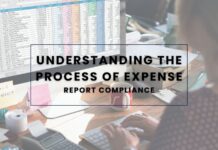







![Why AI Sales Calls Are Making Good Sales Reps Even Better [2025 Guide] ai sales calls](https://blog.peakflo.co/wp-content/uploads/2025/09/65168cf6-3001-4733-8cbc-12d5684cf449-218x150.webp)





